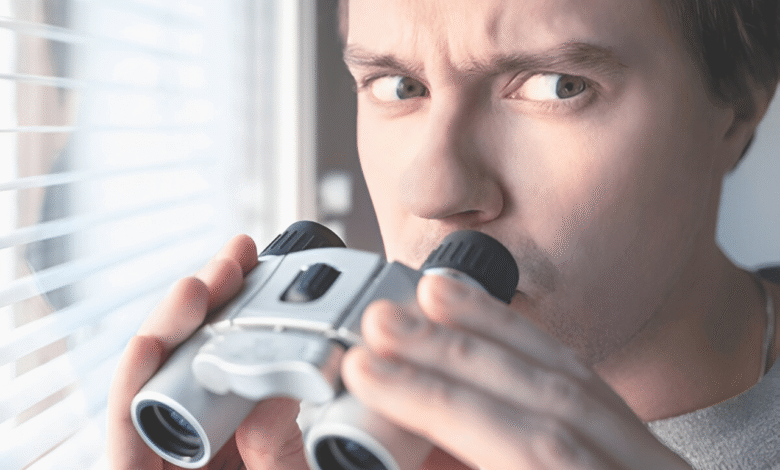Unbelievable Conspiracy Theories That Turned Out to Be True
Conspiracy theories proven Discover shocking government secrets & corporate cover-ups exposed by whistleblowers and declassified documents.

For years, conspiracy theories have been dismissed as the ramblings of paranoid minds until some were shockingly proven true. What was once considered wild speculation has, in several cases, been validated by declassified documents, whistleblower testimonies, and undeniable evidence. From secret government experiments to corporate cover-ups, these revelations force us to question how much we really know and what powerful entities might still be hiding.
The line between Conspiracy Theories and fact is often thinner than we think. History has shown that some of the most outlandish-sounding claims were, in reality, carefully concealed truths. In this exploration, we’ll uncover some of the most jaw-dropping instances where conspiracy theories turned out to be undeniable reality proving that sometimes, the truth really is stranger than fiction.
Unbelievable Conspiracy Theories That Turned Out to Be True
CIA’s MK-Ultra Mind Control Experiments
One of the most infamous government Conspiracy Theories was the CIA’s MK-Ultra program, which sought to develop mind-control techniques. For decades, theorists claimed that the U.S. government was conducting unethical experiments on unsuspecting citizens. In the 1970s, declassified documents confirmed these claims, revealing that the CIA had drugged, tortured, and psychologically manipulated people including American civilians without their consent. The program involved administering LSD and other hallucinogens to test subjects, often without their knowledge. Some victims suffered permanent mental damage, while others died under mysterious circumstances.
NSA’s Mass Surveillance Program
For years, privacy advocates warned about government surveillance on an unprecedented scale. Skeptics dismissed these claims as paranoid until Edward Snowden, a former NSA contractor, leaked classified documents in 2013. His revelations exposed PRISM, a program that collected phone records, emails, and internet activity from millions of people worldwide. The U.S. government had been secretly monitoring citizens and foreign allies, confirming one of the biggest conspiracy theories of the digital age. Snowden’s leaks sparked global debates on privacy and led to reforms, but the extent of surveillance remains a contentious issue.
Tuskegee Syphilis Experiment
One of the most disturbing medical Conspiracy Theories was the Tuskegee Syphilis Study, where the U.S. Public Health Service deliberately withheld treatment from Black men infected with syphilis. For 40 years, researchers observed the disease’s progression, even after penicillin became the standard cure. Whistleblowers exposed the study in 1972, proving that government agencies had knowingly allowed hundreds of men to suffer and die. This unethical experiment fueled distrust in medical institutions and led to stricter ethical guidelines for research.
Big Tobacco’s Lies About Smoking Risks
For decades, tobacco companies denied that smoking caused cancer, despite knowing the truth. Internal documents later revealed that executives had hidden research linking cigarettes to deadly diseases. The corporate cover-up was so extensive that it led to massive lawsuits and stricter regulations on tobacco advertising. This scandal proved that powerful industries could manipulate public opinion for profit, validating long-standing suspicions about corporate deceit.
Operation Northwoods
Declassified documents revealed Operation Northwoods, a proposed U.S. military plan to stage terrorist attacks and blame Cuba, justifying an invasion. The plan included hijacking planes and sinking boats, all to manipulate public opinion. Although never executed, its existence confirmed that false flag operations were seriously considered by the government. This revelation shocked many, as it aligned with conspiracy theories about governments staging crises for Political opportunism.
The FBI’s COINTELPRO Program
The FBI’s COINTELPRO operation targeted civil rights activists, including Martin Luther King Jr., with surveillance, harassment, and sabotage. Initially dismissed as a far-fetched conspiracy, leaked documents proved the FBI’s efforts to disrupt political movements they deemed “subversive.” This program demonstrated how government agencies could abuse power to suppress dissent, validating activists’ long-held suspicions.
Challenges of Unbelievable Conspiracy Theories
Difficulty in Separating Fact from Fiction
One of the biggest challenges with conspiracy theories that turned out to be true is distinguishing them from baseless claims. Many wild theories circulate alongside legitimate concerns, making it hard for the public to determine which deserve serious consideration. Without concrete evidence, even plausible theories can be dismissed as mere speculation.
Corporate Secrecy
Powerful institutions often suppress the truth through classified documents, legal threats, and disinformation campaigns. Whistleblowers like Edward Snowden and leaked documents have exposed real conspiracies, but many remain buried under layers of bureaucracy and national security claims. This secrecy makes it difficult to verify theories until years or even decades later.
Public Skepticism
People who question official narratives often face ridicule or marginalization, even when their concerns are valid. The term “conspiracy theorist” itself carries a negative stigma, making it harder for credible claims to gain mainstream attention. This social pressure discourages further investigation into potential truths.
Media Manipulation
Both governments and corporations have used media manipulation to shape public perception. Some proven conspiracies, like the Tuskegee experiments or Big Tobacco’s lies, were hidden for years because of controlled narratives. Today, the spread of fake news further complicates efforts to uncover real conspiracies.
Legal and Personal Risks for Whistleblowers
Those who expose hidden truths often face severe consequences, including imprisonment, lawsuits, or even threats to their safety. The risks discourage potential whistleblowers from coming forward, allowing conspiracies to remain concealed longer.
Psychological Impact on Society
Discovering that conspiracy theories were true can lead to widespread distrust in institutions. When people learn they’ve been deliberately misled—whether by governments, corporations, or media it creates lasting skepticism and paranoia, making it harder to rebuild public confidence.
Challenge of Proving Hidden Agendas
Many conspiracies involve complex, long-term schemes with intentionally obscured evidence. Without insider testimony or leaked documents, proving these theories is nearly impossible until after the fact. This delay allows harmful operations to continue unchecked.
Exploitation by Bad Actors
Some individuals and groups weaponize real conspiracies to push false narratives. By mixing verified facts with lies, they manipulate public opinion for political or financial gain, making it even harder to discern truth from deception.
Read More: Bizarre TikTok Trends That Actually Work (Backed by Science)
Conclusion
The truth about conspiracy theories that turned out to be true forces us to reconsider how we view allegations of secret government programs and corporate cover-ups. While many theories remain unproven, history has shown that some of the most shocking claims – from illegal human experiments to mass surveillance – were indeed factual. These revelations remind us that healthy skepticism and investigative journalism remain crucial in holding power to account.
As more classified documents surface and whistleblowers come forward, we may discover even more conspiracy theories that turned out to be true. While not every far-fetched claim holds water, these proven cases teach us that dismissing all unconventional ideas outright can mean ignoring genuine injustices. The lesson is clear the truth is often stranger than fiction, and sometimes, the “craziest” theories turn out to be frighteningly accurate.
FAQs
Which Conspiracy Theories was proven true about the U.S. government?
The MK-Ultra program was confirmed when declassified documents revealed the CIA conducted illegal mind-control experiments on unwitting citizens.
Did the NSA really spy on millions of people?
Yes, Edward Snowden’s leaks proved the NSA ran mass surveillance programs like PRISM, collecting private data from global citizens.
Was there really a secret syphilis experiment on Black men?
The Tuskegee Study exposed how U.S. researchers denied treatment to Black men with syphilis for 40 years to study the disease’s effects.
Did tobacco companies know cigarettes caused cancer?
Internal documents proved Big Tobacco hid evidence linking smoking to cancer for decades while publicly denying health risks.
Has the U.S. military ever planned fake attacks?
Declassified files confirmed Operation Northwoods, a proposed (but unused) plan to stage terrorist attacks and blame Cuba to justify war.











